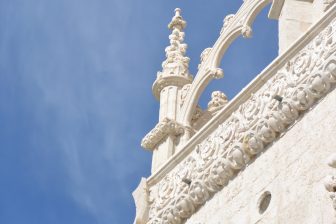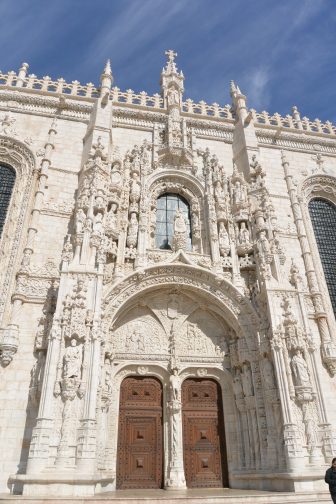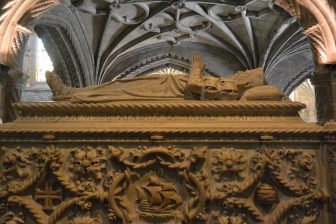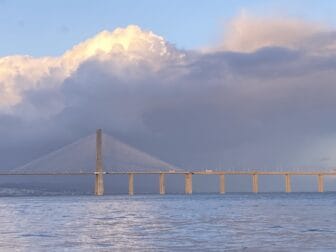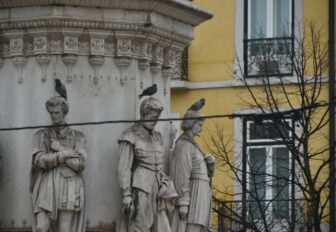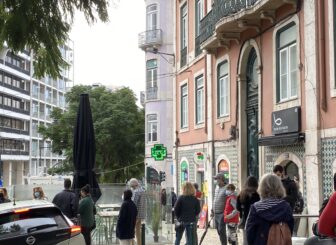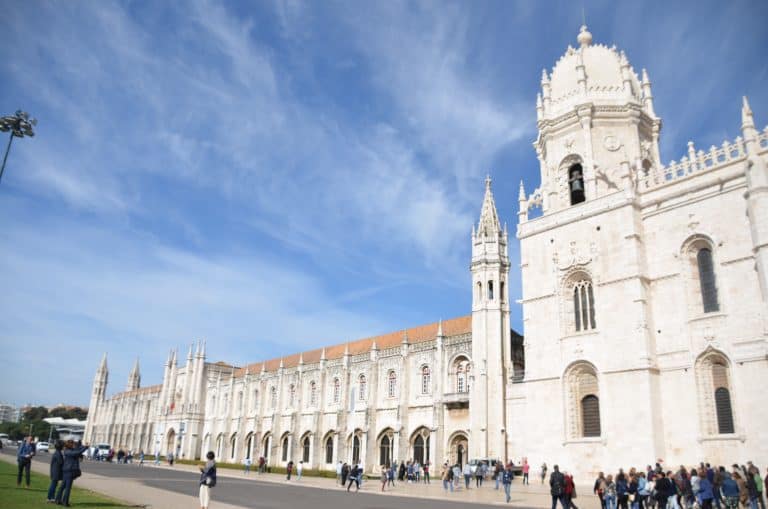
[ Feb.2019 ] On our last day in Lisbon in Portugal, we headed for the Jerónimos Monastery, one of the Unesco World Heritage sites which I had wanted to visit for some time.
This monastery is located in the Belém district, which is about 6km west of the city centre.
In this district, there is the Monument to the Discovery commemorating the Age of Discovery, and Belém Tower, which was built to watch the boats on River Tagus.
We have been there before, but we did not have a chance to visit Jerónimos Monastery.
It is a huge white building, so you would never miss it.
According to the leaflet we got there, it was built by the order of Manuel I, the Portuguese King, between the end of the 15th century and the early 16th century.
They started building it on the 6th January, 1501.
He chose this particular location because there used to be a chapel, which was presented to the Order of Christ by Prince Henry the Navigator, who was the central figure in maritime discoveries, wishing for the safety of the sailors.
The purpose of building this monastery was to commemorate the great pioneering achievement of Prince Henry, as well as to praise the new royal family line, called Aviz Beja.
So, it is quite different from the ordinary monasteries, which are places for the monks to live away from the world.
The mausoleums of the Royal Family are very important here, and to protect them, the King chose the monks of the Order of Saint Jerome.
The name, Jerónimos, comes from Saint Jerome.
Originally, it was planned to be completed within 8 years, but because they scaled it up, it ending up taking 100 years.
The scale of the monastery got bigger and bigger in proportion to the country’s wealth.
In those days, there was a tax called ’Pepper Tax’, which was 5% of the profit from trading with African and Middle Eastern countries and that was used for constructing this monastery.
When we arrived there, we noticed two queues: one was for the church and the other was for the cloister.
We found that it was free to get in the church, so we went there first.
The entrance was on the left hand side of the building, but there was another entrance, called South Entrance, with gorgeous stone carvings.
This was one example of the Manueline building style.
In fact, the Jerónimos Monastery is apparently the masterpiece of the Manueline.
According to the leaflet, on the upper part of the entrance, there is Archangel Michael and in the centre, the Virgin Mary, with Christ being surrounded by other saints.
When we entered the church, we noticed two coffins.
One of them is the coffin of Vasco da Gama, the famous person we learned about in school, who went to India through the Cape of Good Hope.
The other is of Luís Vaz de Camões, the poet whose words are carved on the monument at Cabo da Roca, the westernmost point of the Eurasia continent.
The current main chapel was built in 1572, where Manuel I and his wife, as well as his son and his wife, are enshrined.
At the end on the left hand side of the main chapel is the sacristy a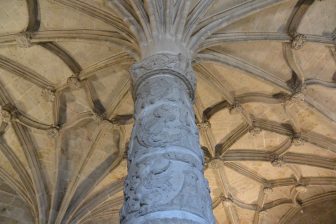
The elegant central column is the main feature here and it is Renaissance Style.
There were shelves along the wall and they contain the vestments even now.
There were panels of pictures on top and they are the pictures of the life of Saint Jerome, painted in the 17th century.

